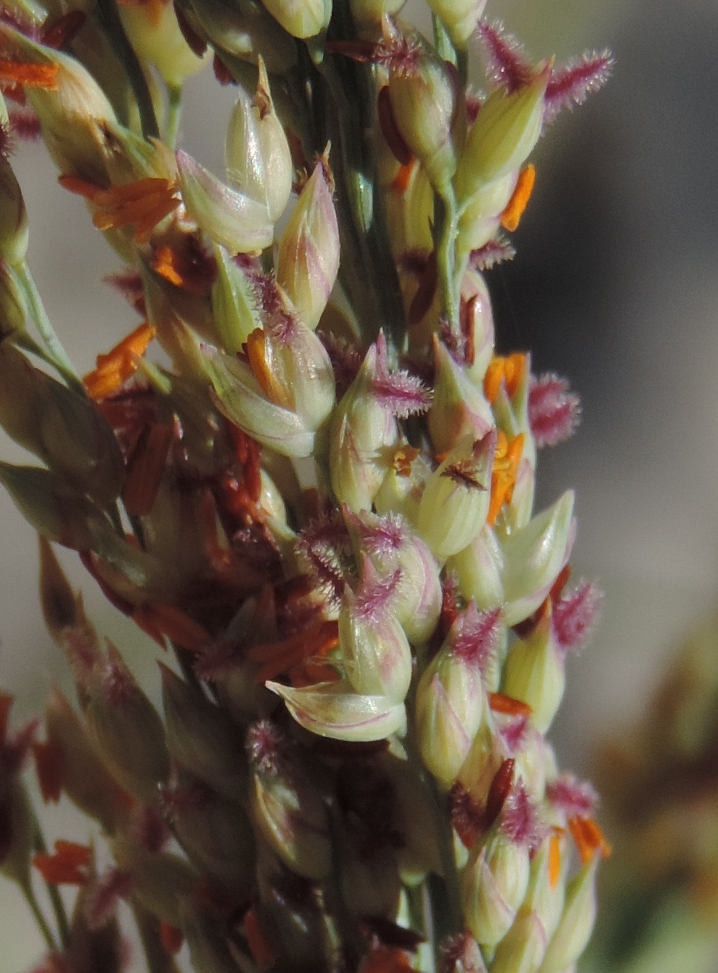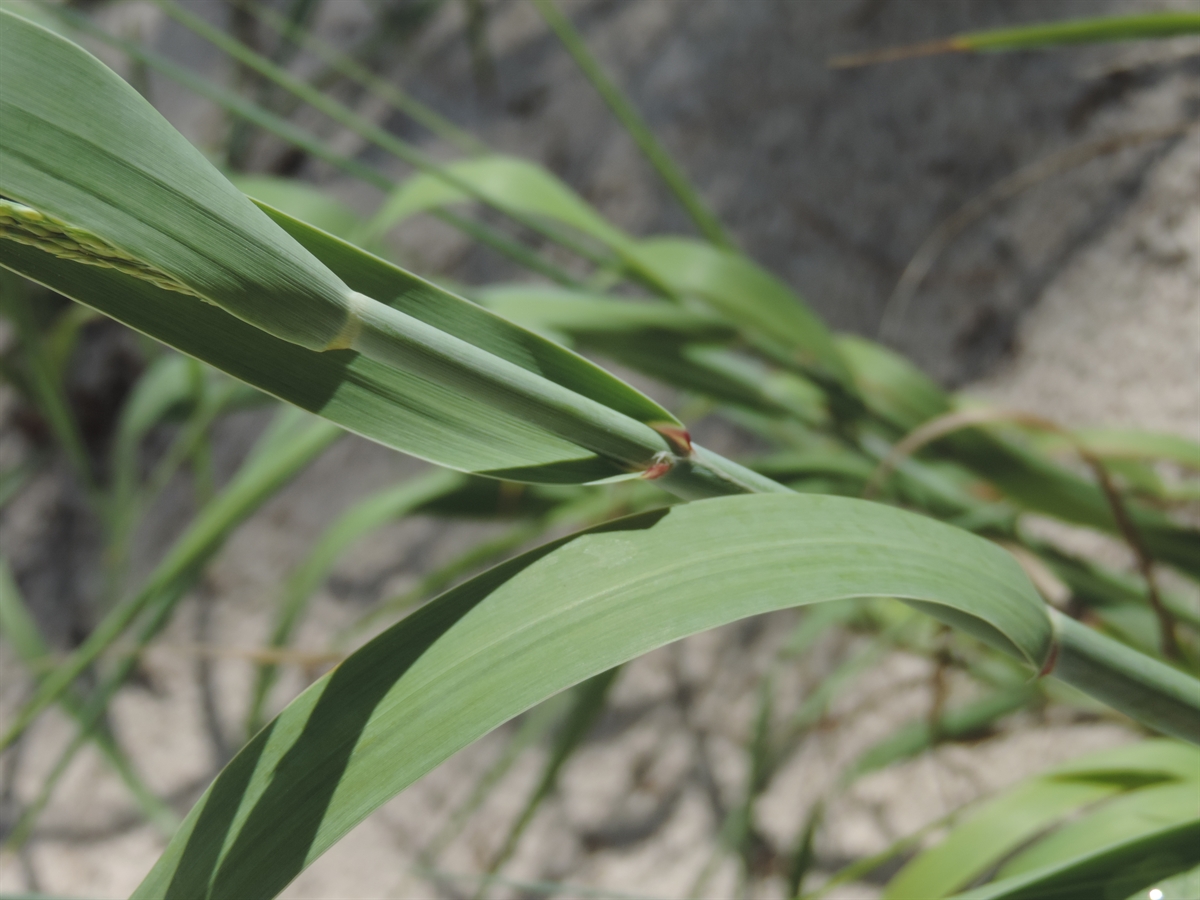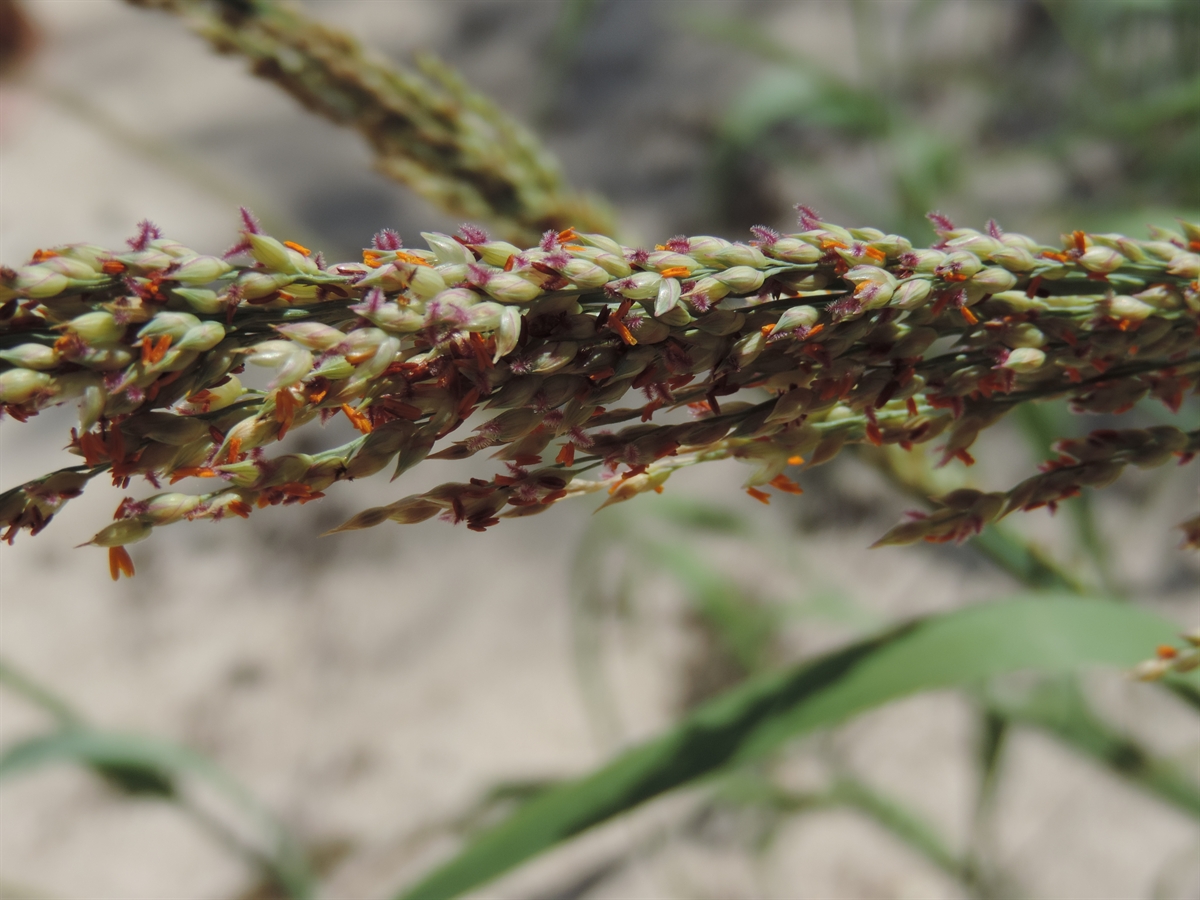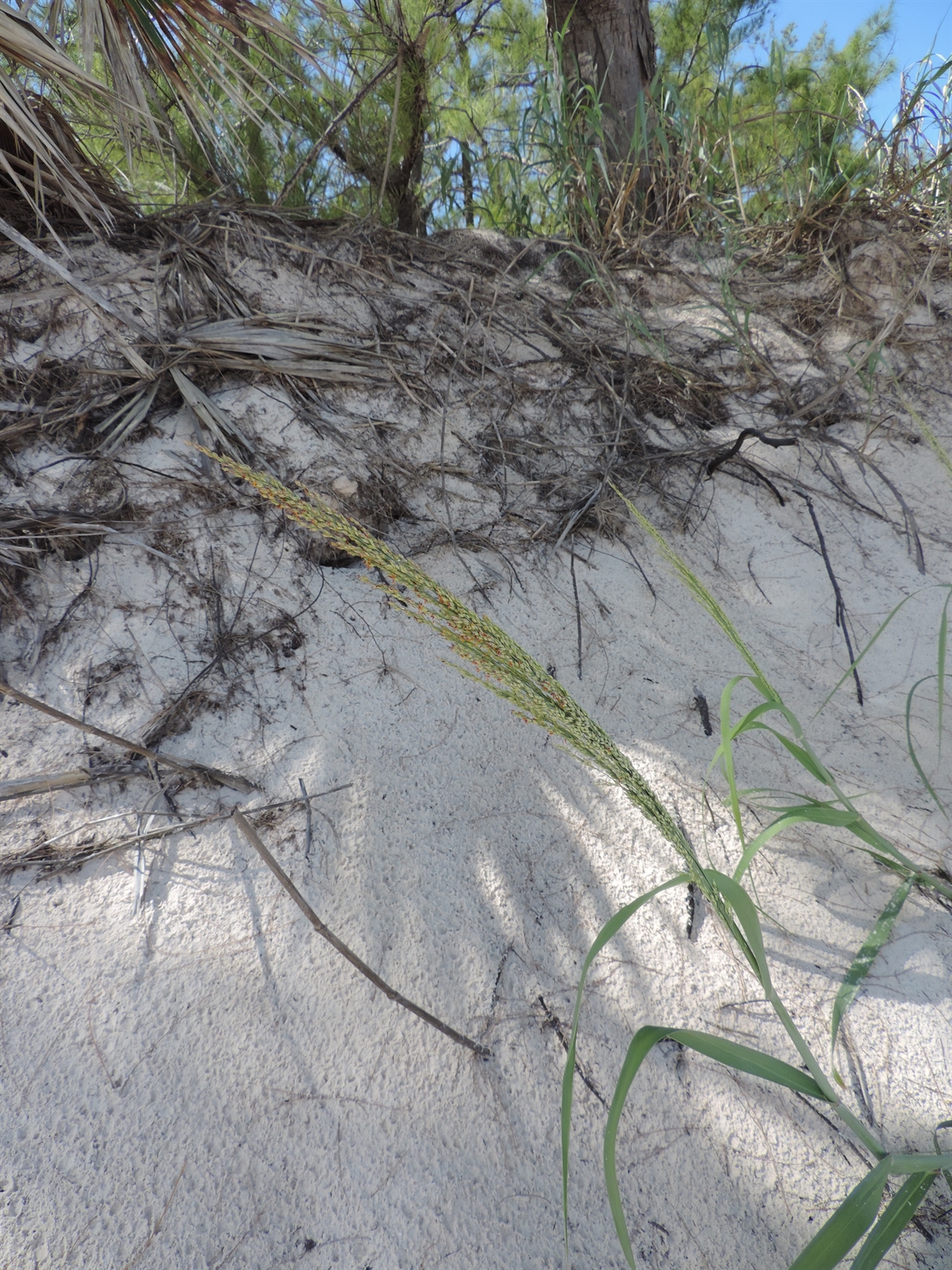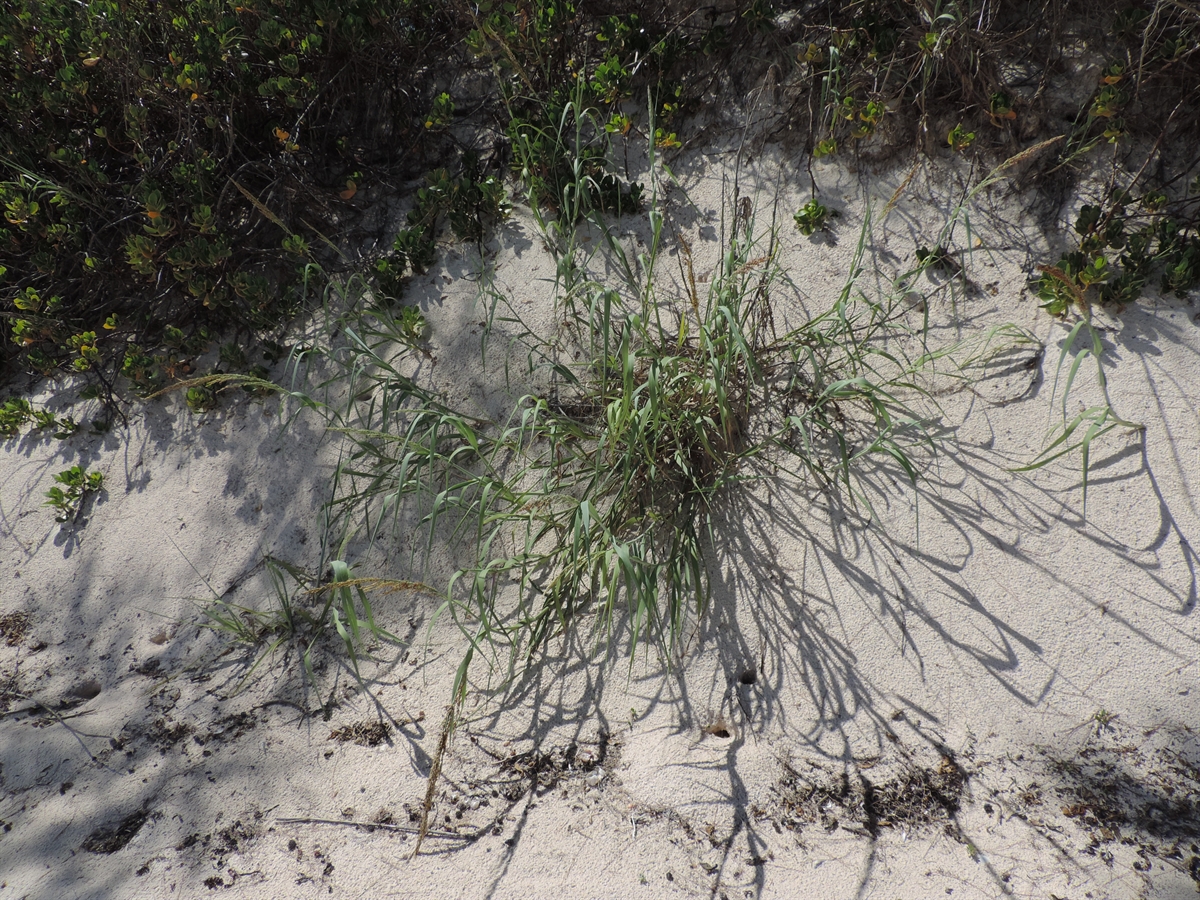Habit: Panicum amarum grows as clumping perennial to 150 cm in height when flowering. The leaves are arranged alternately to 50 cm in length (usually shorter) with a basal sheath extending along the stem. At the point of divergence of the leaf sheath to the leaf blade is a membranous ligule. The leaves are parallel veined and the end portions of the leaf blade are involute.
The zygomorphic flowers are arranged in a panicle made of appressed spikelets. At the base of each spikelet are 2 structures called glumes. The first glume small and the second larger. In each spikelet there are flowering structures each is subtended by 2 additional structures (lemma and palea). There are two florets with the lower one sterile and reduced while the upper fertile with 3 stamens and a superior ovary each with a single locule and seed. The fruit is a caryopsis.
Habitat: Panicum amarum grows in Dunes.
Distribution: Panicum amarum occurs through the island groupings in the Lucayan Archipelago, Cuba and North and Central America.
Medicinal/Cultural/Economic usage: Panicum amarum is not known to be used medicinally in the Lucayan Archipelago
